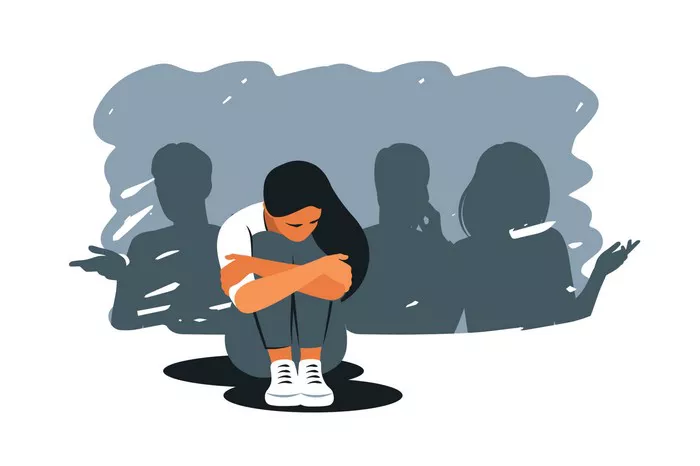Anxiety is a natural response to stress or fear. While occasional anxiety is normal in children, persistent and excessive worry may indicate an anxiety disorder. Recognizing the signs early can help parents, teachers, and caregivers offer the support a child needs to thrive. In this article, we’ll explore the signs of anxiety in children, grouped into emotional, behavioral, physical, and social indicators.
Understanding Child Anxiety
What Is Child Anxiety?
Child anxiety refers to a condition where a child experiences excessive worry, fear, or nervousness that interferes with their daily life. These feelings can be triggered by specific situations (such as school or social events) or may seem to come out of nowhere.
Common Types of Anxiety in Children
Some common anxiety disorders seen in children include:
Separation anxiety disorder – fear of being away from parents or caregivers
Generalized anxiety disorder (GAD) – chronic worry about many aspects of life
Social anxiety disorder – fear of being judged or embarrassed in social situations
Specific phobias – intense fear of a particular object or situation
Selective mutism – consistent failure to speak in certain situations despite speaking in others
Emotional Signs of Anxiety in Children
Excessive Worry and Fear
Children with anxiety often worry more than their peers. They may constantly think about the worst-case scenario or fear things most children don’t give much thought to, such as natural disasters or family members getting hurt.
Irritability or Mood Swings
An anxious child may become easily frustrated, angry, or irritable, often over seemingly minor issues. These emotional outbursts can be a sign that the child is feeling overwhelmed.
Difficulty Controlling Worry
Anxiety may make it hard for children to stop worrying, even when reassured. They might repeatedly seek reassurance from parents and caregivers.
Feeling Overwhelmed or Helpless
Children experiencing anxiety might often express that they feel out of control, helpless, or unsure of how to deal with their emotions.
Behavioral Signs of Child Anxiety
Avoidance of Certain Situations
Children with anxiety may avoid situations or places that make them uncomfortable. For instance, a child with social anxiety may avoid birthday parties or class presentations.
Clinginess and Need for Reassurance
Especially in younger children, clinginess can be a sign of separation anxiety. They may struggle to leave their parents or need constant validation.
Trouble Sleeping
Anxiety can affect sleep patterns. Children may have difficulty falling asleep, staying asleep, or may experience frequent nightmares.
Perfectionism
Children with anxiety may fear making mistakes and strive for perfection. They may redo tasks multiple times or avoid new challenges altogether.
Physical Signs of Anxiety in Children
Frequent Complaints of Aches and Pains
Anxiety can manifest in the body as stomachaches, headaches, muscle tension, or nausea—especially before stressful situations like school or tests.
Changes in Appetite
A child with anxiety might eat more or less than usual. Sudden changes in eating habits can be a physical clue of internal stress.
Sweating or Shaking
Visible signs like sweating, trembling, or a racing heart can occur when a child is anxious, especially during or before feared situations.
Fatigue or Low Energy
Constant worrying can be mentally and physically exhausting. An anxious child may appear unusually tired or less energetic than normal.
Social and Academic Signs
Withdrawal from Friends and Activities
Children who once enjoyed socializing may become more isolated or refuse to participate in extracurricular activities. Social withdrawal is a key indicator of social anxiety or depression.
Decline in School Performance
Anxiety can impair concentration and memory, leading to a drop in academic performance. A child may also avoid school altogether due to anxiety.
Trouble Communicating Thoughts and Feelings
Anxious children may find it difficult to express how they feel. They might bottle up emotions or become unusually quiet in group settings.
Refusal to Go to School
Refusing to attend school is a common behavior in children with anxiety. This may be due to social fears, test anxiety, bullying, or separation anxiety.
When to Seek Help
Duration and Impact
If the signs of anxiety last for weeks or months and interfere with a child’s daily life—such as affecting their health, social relationships, or school performance—it’s important to seek professional help.
Talk to a Pediatrician or Mental Health Professional
A child psychologist or counselor can help evaluate the child and determine the best treatment approach. Common interventions include cognitive-behavioral therapy (CBT), parent training, and, in some cases, medication.
Early Intervention Matters
The earlier anxiety is recognized and treated, the better the outcome. Early intervention can help prevent long-term emotional and social challenges.
Supporting a Child with Anxiety
Create a Safe and Supportive Environment
Encourage open communication and let your child know it’s okay to talk about fears. Show empathy and avoid minimizing their feelings.
Establish Routines
Consistent daily routines help anxious children feel more secure. A predictable schedule can reduce uncertainty and stress.
Teach Coping Skills
Help children develop age-appropriate coping strategies such as deep breathing, journaling, or drawing. Praise efforts to face fears, even in small steps.
Limit Exposure to Stressors
While some challenges are unavoidable, try to reduce unnecessary stress. Limit exposure to violent media and ensure the child is not overscheduled.
Work with Schools and Teachers
If anxiety affects school life, collaborate with teachers and school counselors to create accommodations that help the child succeed in a classroom setting.
Conclusion
Recognizing the signs of anxiety in children is the first step toward helping them lead healthy, happy lives. While many children experience worry from time to time, persistent anxiety should not be ignored. Emotional, behavioral, physical, and social indicators provide valuable clues. By staying attentive and supportive, parents and caregivers can ensure that anxious children get the help they need to feel safe, confident, and capable.
You Might Be Interested In:

